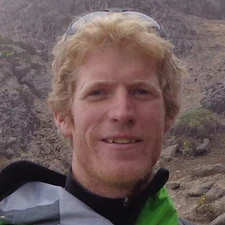Åke Fagereng

TS Tectonics and Structural Geology
The 2016 Division Outstanding Young Scientist Award is awarded to Åke Fagereng for fundamental contributions to the understanding of the processes and physical conditions prevailing around Earth’s active plate boundaries.
Åke Fagereng is a truly meticulous field structural geologist, who takes inspiration from the careful observation and detailed description and analysis of rocks and their relationships in the field. His field studies are followed by laboratory analyses and a careful modelling component that are justified by and remain invariably anchored in solid field observations and data. He is undoubtedly becoming an inspiring leader for a new generation of structural geologists.
Fagereng has established himself internationally through a number of outstanding contributions in the field of tectonics and structural geology. He has put together an impressive bibliography (> 30 publications) in the five years from his PhD with well-respected papers published in highly ranking international journals, in addition to many invited presentations at international meetings. His research is centred on the fundamental processes that steer Earth’s deformation, at plate boundaries and plate interiors. In particular he is interested in where and why big earthquakes occur, and in the continuum of fault slip styles from aseismic creep to earthquake slip. Fagereng combines a talent for identifying and working on important problems with a capacity for comprehensive multi-scalar analysis and an ability of rapidly acquiring and applying new analytical techniques. He has worked on topics ranging from microstructural evidence for fluid overpressuring in fault-rock assemblages, earthquake mechanics in deep continental crust, to rheology and the structural character of the seismogenic interface within subduction zones in a broad range of tectonic settings including New Zealand, South Africa, Namibia, Malawi, Antarctica, Norway and the UK.
